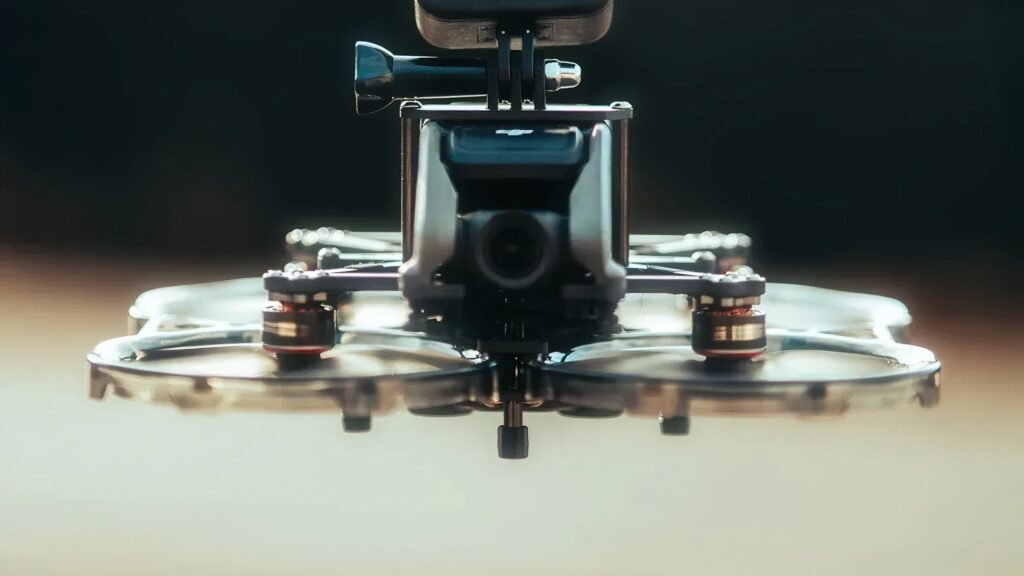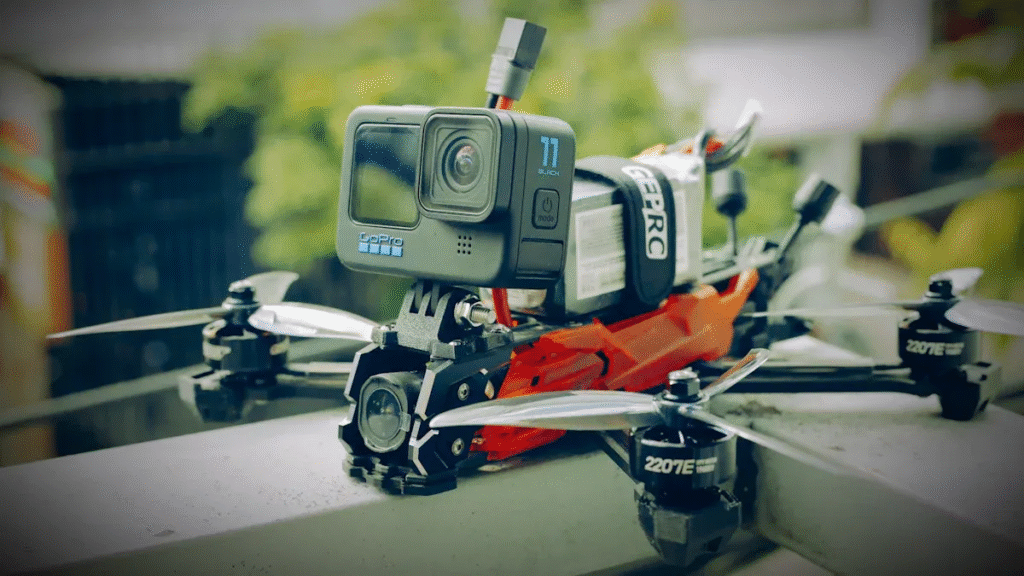For a 1.2kg quadcopter with a 4S battery and 12″ propellers, you should choose a BLDC motor in the 850-1100 KV range. The kV rating shows how fast the motor spins for each volt you apply. This range gives you the right balance of speed and torque for stable flight. If you use the wrong kV, your quadcopter may overheat or lose power. Always match the motor’s kV with your battery and propeller size to avoid problems like excess heat, low efficiency, and poor flight time.
Key Takeaways
- Pick a BLDC motor with a kV rating from 850 to 1100 for a 1.2kg quadcopter. This helps balance power and efficiency. Match your motor’s kV rating with the right battery voltage and propeller size. This makes sure your quadcopter flies safely and smoothly. Try to get a thrust-to-weight ratio of at least 2:1. Each motor should give about 600g of thrust for steady flight. Do not use motors with kV that is too high or too low. This can cause overheating, short flight time, and bad control. Always check that your motor, ESC, battery, and propeller work well together. Look over your setup before you fly.
BLDC Motor kV Basics

What is kV?
When you see a BLDC motor, you might notice a number and “kV.” This number shows how fast the motor spins for each volt. It only counts when nothing is attached to the motor. For example, a 1000 kV motor with a 10-volt battery spins at 10,000 RPM with no propeller. The kV value depends on how the motor is made. It changes with the wire windings and magnet strength inside. To find kV, run the motor without a propeller. Use a tachometer to check the RPM. Divide the RPM by the voltage you used. This number is the kV rating. It helps you compare motors and pick the best one for your quadcopter.
How kV Affects Performance
The kV rating changes how your quadcopter works. You need the right kV for good speed, power, and flight time. The table below shows what happens with high or low kV motors:
| Aspect | Effect of High kV Motor | Effect of Low kV Motor |
|---|---|---|
| Definition | Higher RPM per volt, spins faster | Lower RPM per volt, spins slower |
| Thrust | Good for quick acceleration (racing drones) | Higher torque, better for stable flight |
| Efficiency | Less efficient for long flights | More efficient, draws less current |
| Flight Time | Shorter due to higher current draw | Longer due to improved efficiency |
| Application | Racing drones needing speed | Drones needing stability or carrying payloads |
| Propeller Match | Needs smaller or high-pitch propellers | Works well with larger propellers |
| Battery Voltage | Higher voltage increases RPM and power | Must match battery voltage for best efficiency |
Tip: If you want your quadcopter to fly longer and stay steady, pick a lower kV motor with a bigger propeller. If you want it to go fast and turn quickly, use a higher kV motor with a smaller propeller.
kV Recommendations
1.2kg Quadcopter Range
When you build a quadcopter that weighs about 1.2kg, you want to choose a motor that gives you enough power without wasting energy. Most quadcopters in this weight class use motors with kV ratings between 850 and 1100 when paired with a 4S battery and 12-inch propellers. This range helps you get a good balance of thrust, efficiency, and flight time. If you use a motor with a much higher kV, it will spin faster but may not have enough torque to turn larger propellers. This can cause your drone to overheat and drain the battery quickly.
You should aim for a thrust-to-weight ratio of at least 2:1. That means each motor should produce about 600g of thrust for a 1.2kg quadcopter. Many popular motors, like the MT2204 and Racerstar BR2205, offer kV ratings in the 2000-2300 range for racing drones, but these are usually paired with smaller propellers and 3S batteries. For stable flight and longer times in the air, lower kV motors work better with bigger props and higher voltage batteries.
Note: Lower kV motors give you more torque, which helps spin larger propellers. This setup is great for carrying heavier loads or flying longer.
Matching Battery and Propeller
You need to match your motor’s kV rating with the right battery voltage and propeller size. The kV rating tells you how fast the motor spins for each volt from the battery. If you use a higher voltage battery, the motor spins faster. If you use a bigger propeller, the motor needs more torque to keep spinning. Lower kV motors work best with larger propellers and higher voltage batteries. This combination gives you more thrust and better efficiency.
- Motor kV rating sets the RPM per volt. Higher kV means faster spinning, but less torque.
- Battery voltage must match the motor’s range. Too much voltage can damage the motor.
- Propeller size affects how much thrust you get. Bigger props need more torque.
- The right match between motor, battery, and propeller gives you smooth flight and good power.
If you want your quadcopter to fly longer and carry more weight, choose a lower kV motor with a larger propeller and a battery that matches the motor’s voltage range. This setup helps you get the most out of your BLDC motor.
Here is a table to help you pick the right kV range for different quadcopter weights:
| Quadcopter Weight | Recommended Propeller Size | Battery Voltage | Motor Size Range | kV Rating Range |
|---|---|---|---|---|
| ≤ 500g | 5″ – 6″ | 3S (11.1V) | 1806 – 2204 | 2000 – 2600 KV |
| 1.2kg | 10″ – 12″ | 4S (14.8V) | 2212 – 2814 | 850 – 1100 KV |
| 2kg | 12″ – 14″ | 4S – 6S | 3508 – 4006 | 500 – 900 KV |
| 3kg+ | 14″ – 17″ | 6S – 8S | 4108 – 5008 | 350 – 700 KV |

Tip: Always check your motor, battery, and propeller specs before flying. The right combination keeps your quadcopter safe and efficient.
Choosing a BLDC Motor

Thrust-to-Weight Ratio
You need to make sure your quadcopter can lift off and fly safely. The most important step is to calculate the thrust-to-weight ratio. For a 1.2kg quadcopter, you want each motor to provide at least twice the total weight in thrust. This means your motors together should deliver at least 2.4kg of thrust. Divide this by four (for four motors), and each BLDC motor should give you at least 600g of thrust. This extra power helps your drone hover, climb, and handle wind or sudden moves.
Tip: Always aim for a thrust-to-weight ratio of 2:1 or higher. This gives you better control and keeps your quadcopter stable in the air.
Safety matters, too. Make sure your motors and propellers work well together. Motors must match with reliable controllers and sensors. These help you monitor speed, force, and torque. Good monitoring can warn you if a propeller gets damaged or if a motor starts to fail. Strong, rigid propellers and efficient motors also help prevent accidents.
Selection Steps
Follow these steps to pick the right BLDC motor for your 1.2kg quadcopter:
- Calculate Total Thrust Needed
Multiply your quadcopter’s weight by two. For 1.2kg, you need at least 2.4kg of thrust. - Choose the Right kV Range
Pick a motor in the 850-1100 kV range. This works best with 4S batteries and 12″ propellers. - Match Motor, Battery, and Propeller
Use a 4S battery and 12″ propellers for this setup. Make sure your motor can handle the voltage and spin the propeller size you choose. - Check for Quality and Reliability
Trusted brands like Lofty AgroTech offer balanced, plug-and-play motors such as the A2212 1000KV. Shenzhen Xiandong Technology Co., Ltd. also provides motors with strong thrust and energy efficiency. These companies give you detailed specs and secure buying options. - Think About Safety
Use motors that work with good controllers and sensors. This helps you spot problems early and keeps your flights safe.
Note: Retek Motion is another trusted source for quality motors and expert advice. They can help you find the best match for your drone project.
Common Mistakes
Too High or Low kV
Choosing a BLDC motor with the wrong kV rating can cause many problems for your quadcopter. If you pick a kV that is too high, your motors will spin too fast. This can make your drone unstable and cause the motors to overheat. You may also notice your battery drains quickly, and your ESCs might get too hot or even burn out. On the other hand, if you use a kV that is too low, your quadcopter may not have enough thrust to lift off or respond well to controls. The motors will draw more current to try to keep up, which can also lead to overheating and short flight times.
Always match the motor kV with your battery voltage and propeller size. Use the formula: Motor RPM = kV × Battery Voltage. This helps you keep your motor speed safe for your propellers and ESCs.
Compatibility Issues
Many quadcopter problems come from mismatched parts. You need to make sure your BLDC motor, ESC, battery, and propeller all work well together. Here are some common issues you might face:
- ESCs can overheat or burn out if the motors and propellers draw more current than the ESC rating.
- Using propellers that are too large makes motors run hot and drains the battery fast.
- Batteries with a low C rating or small capacity can cause voltage drops, leading to power loss or motors stopping mid-flight.
- Bad wiring or loose connectors can cause motors to stop or not spin at all.
- Physical damage from crashes can break ESCs or motors.
- Uneven battery discharge or a bad center of gravity can make some motors work harder, causing overheating.
Tip: Always check that your motor kV, ESC current rating, battery voltage and capacity, and propeller size match. Regularly inspect your wiring and connectors. Retek Motion recommends using a battery with a safety margin above your needs and checking all parts before each flight.
You should choose a motor in the 850-1100 kV range for your 1.2kg quadcopter. This range gives you the right mix of power and efficiency. Always match the kV rating with your battery and propeller for safe flights. Use this checklist before your first flight:
- Pick a motor with enough power and the correct kV.
- Select a compatible ESC and calibrate it.
- Check motor spin direction and use the right propellers.
- Balance your propellers for smooth flight.
For expert help, reach out to Retek Motion.




